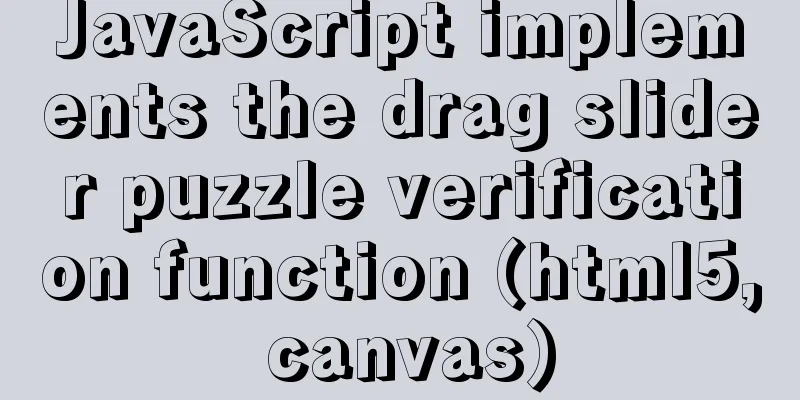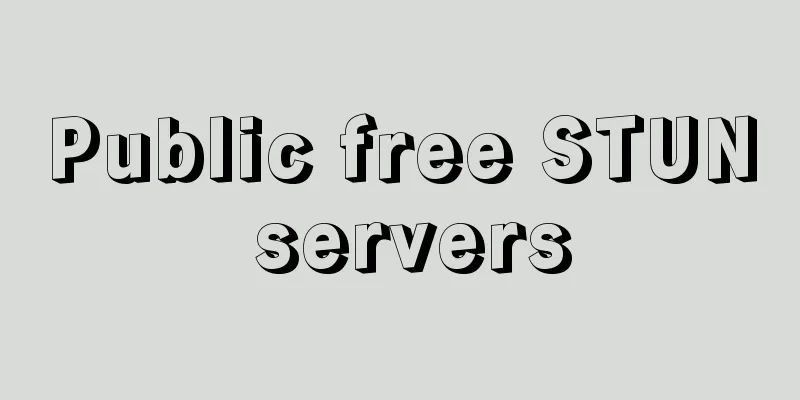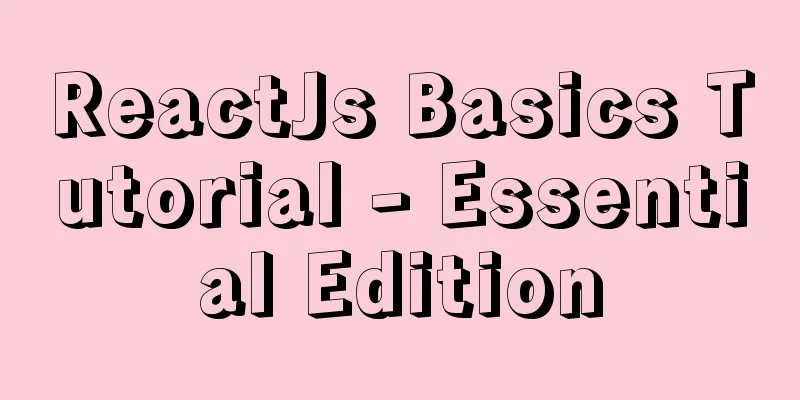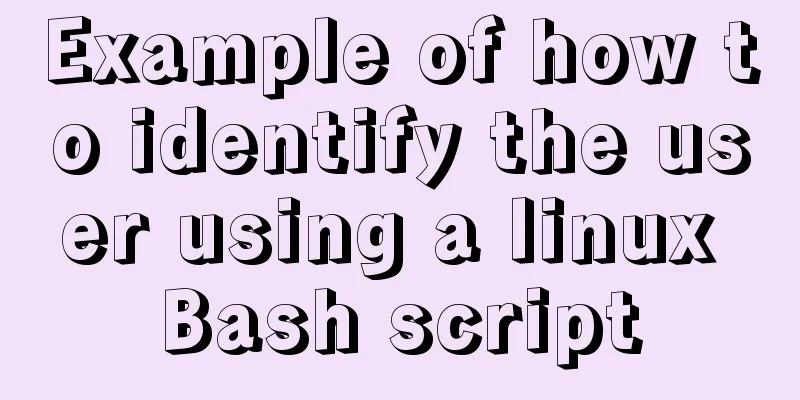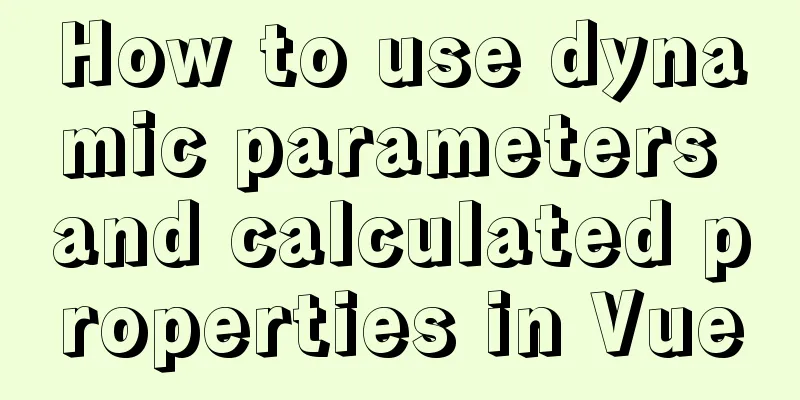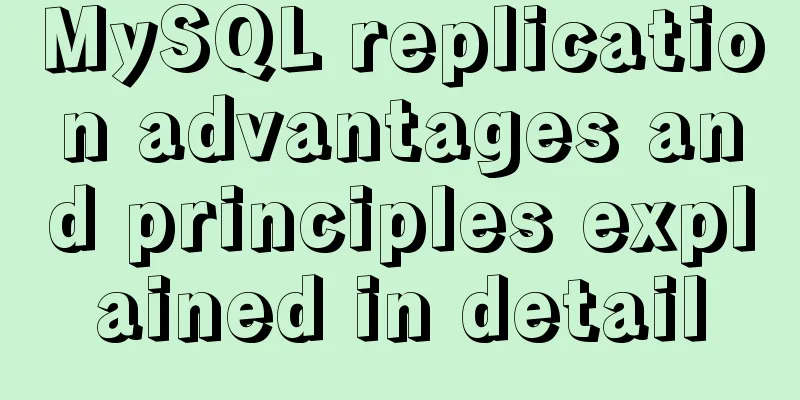How to implement form validation in Vue
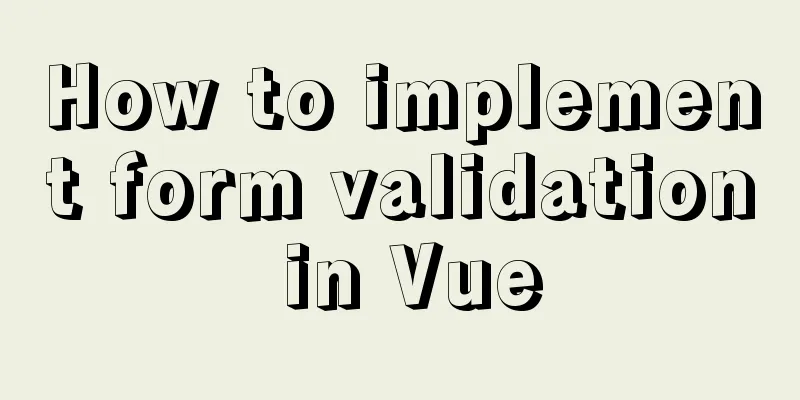
1. Installation and useFirst, install it in your Vue project: npm install --save vue-input-check After the installation is complete, import and register: import inputCheck from 'vue-input-check'; // Install Vue.use(inputCheck); Then, we can use it in the form:
<form autocomplete="off" novalidate>
<input v-model='key' name='Input box name' v-input-check='[key,"validate-express"]'/>
<!-- You can have as many input boxes as you want-->
</form>
As you can see, validate-express="val1:param1:param2|val2|valu3:param1" Different rules are separated by |, and the parameters of the rules that need to pass parameters are separated by :. Let’s look at a few examples:
v-input-check='[key,"required|maxLength:10|regexp:^\\d{1,5}$"]'
v-input-check='[key,"required"]'
The following built-in rules are currently available:
2. Obtaining the Verification ResultsAfter the page rules are defined, you have two ways to get the verification results. 1.JS methodSimply use the following method to start the check: this.$validateCheck(formnode, callback, errorback); This object contains three parameters:
In addition, the error callback has a parameter with the data format:
{
"$el": the wrong input box node "$error": the first error message of the current input box}
2. HTML methodThe purpose of providing this method is to provide real-time feedback on the input status of the current form on the page. First, on the form, you can determine whether the form is valid by judging whether
3. Custom validation rulesIn most cases, we may also need to add new validation rules, after all, the default ones are often not enough to meet all business situations:
Vue.use(inputCheck, {
// Custom validation rules validate: [{
//Rule name: "XXX",
// Verification method, return true for legal, false for illegal // Note that, except for el and val, the remaining parameters of this function are passed by ```:``` when used, and there can be any number of them // For example: ``` required:true|phone:parm1:param2 ```
test: function (el, val, ...) {
return true|false;
},
// Illegal prompt information, should return a string message: function (el, name) {
return "XXX";
}
},
// There can be multiple validation rules...
]
});
This is the end of this article about how to implement form validation in Vue. For more relevant content about implementing form validation in Vue, please search for previous articles on 123WORDPRESS.COM or continue to browse the following related articles. I hope you will support 123WORDPRESS.COM in the future! You may also be interested in:
|
<<: Troubleshooting MySQL high CPU load issues
>>: The process of installing and configuring nginx in win10
Recommend
CentOS 6.6 source code compilation and installation of MySQL 5.7.18 tutorial detailed explanation
1. Add users and groups 1. Add mysql user group #...
Teach you how to create a project using vue-cli3 in five minutes (beginner's guide)
Table of contents 1. Build the Vue environment 2....
mysql installer community 8.0.16.0 installation and configuration graphic tutorial
mysql installer community 8.0.16.0 installation g...
How to create a web wireframe using Photoshop
This post introduces a set of free Photoshop wire...
Use thead, tfoot, and tbody to create a table
Some people use these three tags in a perverted wa...
8 essential JavaScript code snippets for your project
Table of contents 1. Get the file extension 2. Co...
CentOS configures local yum source/Alibaba Cloud yum source/163yuan source and configures the priority of yum source
1. Use Centos image to build local yum source Sin...
BUG of odd width and height in IE6
As shown in the figure: But when viewed under IE6...
HTML+CSS+JavaScript to create a simple tic-tac-toe game
Table of contents Implementing HTML Add CSS Imple...
Use vue2+elementui for hover prompts
Vue2+elementui's hover prompts are divided in...
Detailed explanation of MySQL master-slave replication and read-write separation
Article mind map Why use master-slave replication...
JavaScript+html implements random QR code verification on front-end pages
Share the cool front-end page random QR code veri...
Example of deploying Laravel application with Docker
The PHP base image used in this article is: php:7...
MySQL enables slow query (introduction to using EXPLAIN SQL statement)
Today, database operations are increasingly becom...
Analysis of 2 Token Reasons and Sample Code in Web Project Development
Table of contents question: There are 2 tokens in...
